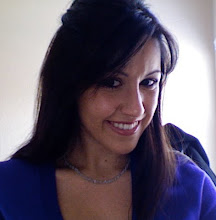I came across this blog about Drew, an adorable 2 year, 9 month old boy who had simultaneous bilateral cochlear implants in June 2007. He was born with profound hearing loss due to Connexin 26, which is a known genetic cause of hearing loss. He was implanted at just 8.5 months old, making him the youngest child with bilateral implants in Ohio!
You can read all about Drew's process of cochlear implantation, his daily adventures and more on his blog: Turn On My Ears!
Watch a video of Drew when he hears his first sounds with his cochlear implants!
Wednesday, March 31, 2010
FDA Approved: Implantable hearing device
On March 17, 2010, the U.S. Food and Drug Administration (FDA) approved the first 100% implantable hearing device called the Esteem® Totally Implantable Hearing System by Envoy Medical Corporation. The goal of the device is to replicate the function of the middle ear bones and improve quality of life.
The Esteem®, which is implanted under the skin behind the ear, consists of three components: a sound processor, a sensor and driver that are all hermetically sealed and biocompatible.
Here’s how it works: the ear naturally receives sound from the environment and the eardrum vibrates. The sensor, which is attached to the middle ear bones, picks up the vibrations and sends it to the sound processor. The sound processor amplifies and filters the signal and sends the signal to the driver, which is attached to the stapes. The driver converts the electrical signal back to vibrations to be delivered to the cochlea. The cochlea then sends the signal to the brain for processing. An audiologist programs the sound processor and the patient has a remote control to adjust the volume and change programs.
The device has been in a clinical trial period for five years. Shohet Ear Associates Medical Group, Inc. of Newport Beach, CA was one of three sites in the nation to participate in the Esteem® clinical trials. They reported, “At a quiet conversation level, average patient speech understanding improved by more than 45% over their hearing aids.”
According to FDA documents, the Esteem is recommended for patients who meet the following criteria.
- Adult subjects 18 years of age or older
- Mild to severe sensorineural hearing loss
- Speech discrimination test score greater than 40%
- Normally functioning Eustachian tube
- Normal middle ear anatomy
- Adequate space for the Esteem® implant
via FDA
Tuesday, March 30, 2010
AudiologyNow! 2010 - April 14-17, 2010 - San Diego
The annual American Academy of Audiology (AAA) conference, AudiologyNOW! is a couple weeks away in the beautiful city of San Diego. This conference is considered the "largest gathering of audiologists in the world!"
The conference offers educational sessions, clinical and research presentations, and exhibitors featuring the latest technology in hearing devices, equipment, products and more. Some of the topics discussed at the conference include hearing loss prevention, hearing loss treatment, neuro-audiology, practice management, vestibular among others.
Visit the AudiologyNOW! website for more information.
Labels:
audiology,
awareness,
hearing aids,
hearing conservation,
presentations,
products
Monday, March 29, 2010
Revisiting the Dancing Outer Hair Cell
Back in 2007, I posted a link to the video of a hair cell located in the cochlea, which is the sensory organ of hearing. I find the auditory system so fascinating, that I had to post it again.
A UK Scientist by the name of Jonathon Ashmore was able to isolate a single outer hair cell and make it dance! That's right, dance! Check out the dancing outer hair cell.
Read an explanation of movie from Ashmore's website here: http://www.physiol.ucl.ac.uk/ashmore/hairexpl.htm
Sunday, March 28, 2010
Plantronics shows off their wall of ears
If you have ever had earmold impressions taken for your ears, then you probably know that it can be described as a unique experience. Audiologists typically make impressions of ears for custom earplugs, swimmer's earplugs or hearing aids.
The company Plantronics, which makes Bluetooth accessories, has created a 'wall of ears' at its headquarters to show the wide-range of human ear shapes and sizes. This process gives Plantronics some insight for creating headsets that fit on a variety of human ears.
Check out the cool video showing how they create a model of an ear. Head's up: this is not how it's done at an audiologist's office!
Since the video is wide-screen, you can also watch it on YouTube.
Joey McIntyre (New Kids on the Block) talks about their 3 month old son's hearing loss
People magazine's interview with Joey McIntyre gives a touching glimpse into one family's experience with having their baby, Rhys, who was diagnosed with a permanent severe hearing loss at birth. They discuss their reaction to the news and how their now 3 month old son, who is wearing hearing aids, is able to be a part of the hearing world. When he is 12 months old, he will be evaluated for a cochlear implant.
This story is a wonderful example showing the progress a child can show with early identification of a hearing loss and subsequent early intervention. Read story on www.people.com: Joey McIntrye Opens Up About Rhys' Hearing Loss.

It is also wonderful to recognize the outpour of support from readers' comments! Enjoy!
Source: www.people.com; photo by Alison Dyer-People
Labels:
advocacy,
audiology,
awareness,
hearing aids,
pediatric hearing loss,
ucla
Subscribe to:
Posts (Atom)





